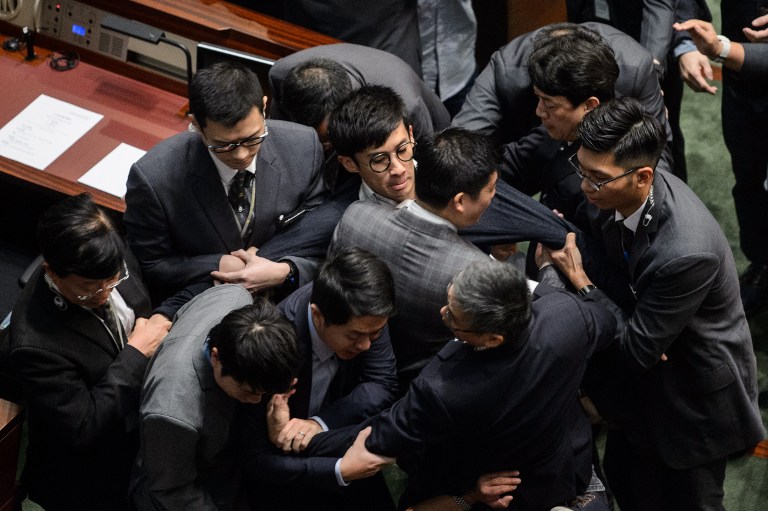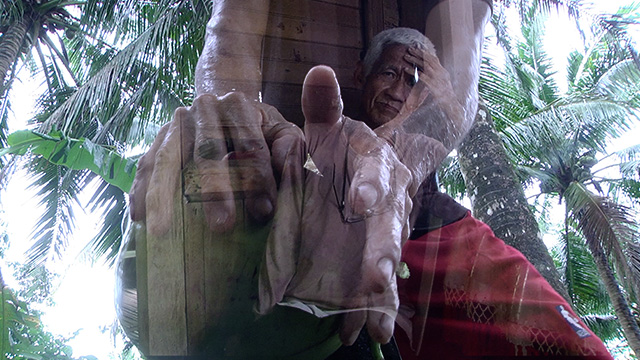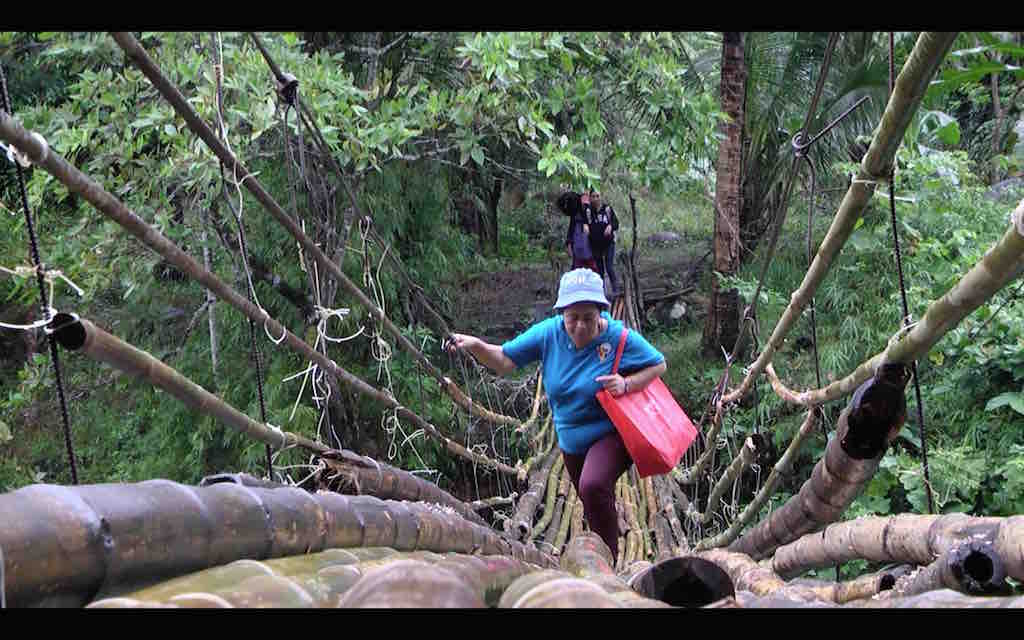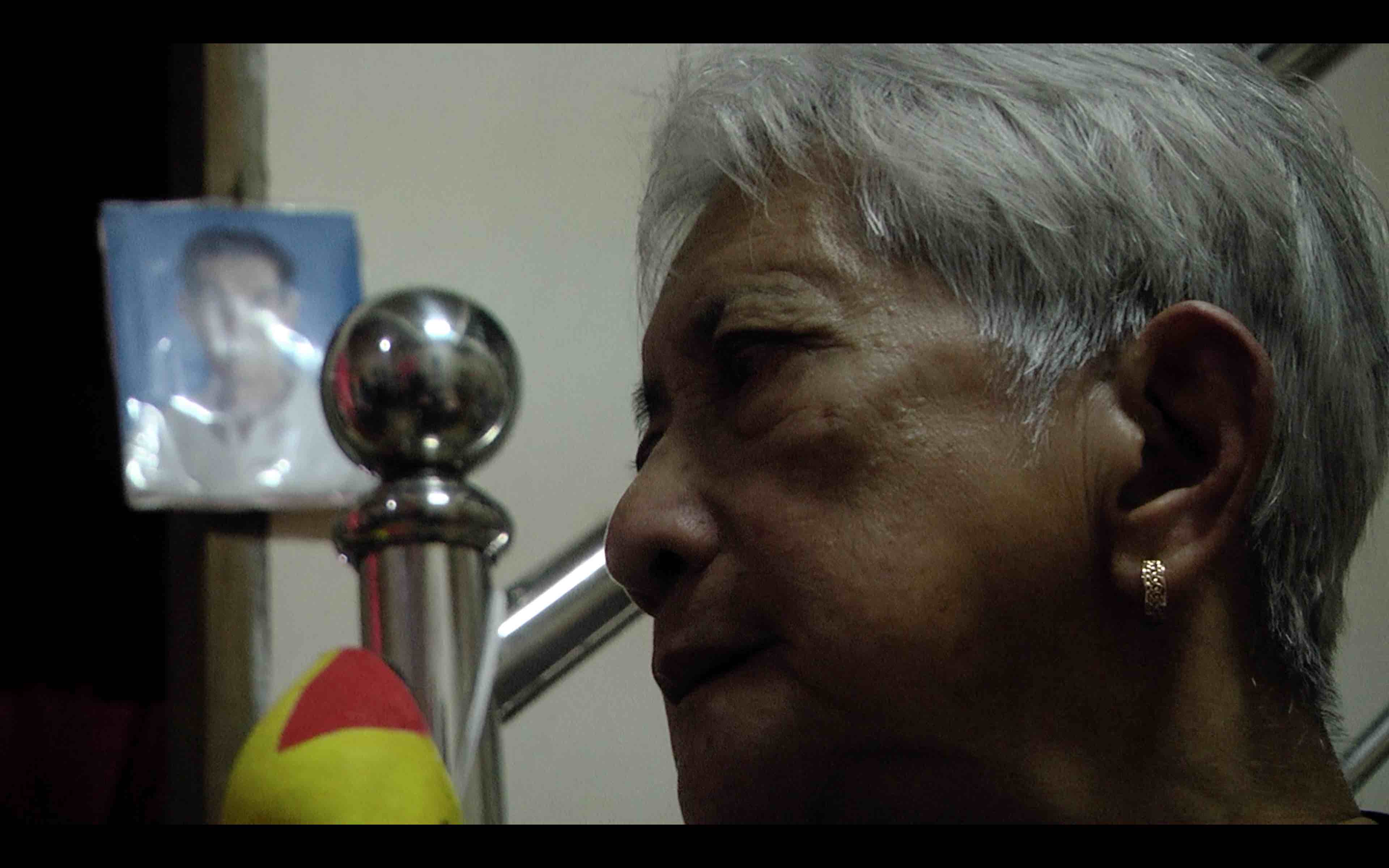![RACING AGAINST TIME. Nearly 44 years after the coco levy was first imposed, coconut farmers – belonging to the country's poorest of the poor – have continued to suffer in silence.]()
Part 1 of 3
QUEZON, Philippines – It’s a long, uphill climb to Barangay Potol in Tayabas, Quezon, one of the coconut farming towns in the province.
Just a few kilometers away from urban centers are makeshift bamboo bridges that have failed residents several times for the past decades.
Left with no option, residents like Aling Rosing, Ka Sita, and Mang Ruben live with the risk and go on with their lives.
The 3 are among the 3.5 million coconut farmers, earning an estimated P16,000 annually and belonging to the country’s poorest of the poor. They are victims of the coco levy fund scam from 1971 to 1983 under the Marcos administration, with collected taxes amounting to P9.7 billion.
These farmers were taxed by the government, only for their payments to be used by former president Ferdinand Marcos and his alleged cronies, Eduardo "Danding" Cojuangco Jr, Juan Ponce Enrile, and some others, to invest in and buy businesses for their own benefit.
More than 45 years since the taxes were imposed on their coconut products, farmers have yet to receive the benefits promised them. They have had no option but to face reality and wait for the day when the funds – rightfully theirs – would be returned to them.
On Wednesday, January 18, several coconut farmers held a protest anew in front of the Department of Agriculture in Quezon City to demand the release of funds, which the Supreme Court ruled to belong to the public in 2014.
With stock certificates
Aling Rosing Valdeavilla, 77 years old, and her departed husband Remigio have been coconut farmers for more than 5 decades. They relied mainly on coconut and rice farming to support their 6 children.
Years may have passed, but for her, it seems just like yesterday when the government promised them “rewards” in exchange for taxes collected from their copra sales. Her husband died in 2013, and with him went the hope that they would one day reap the promised “rewards.”
She has carefully kept the “stock certificates” or the certificates indicating their supposed ownership of stocks of certain companies where their money was invested – United Coconut Planters Bank, Cocolife insurance, Legaspi Oil Company, Granexport Manufacturing Corporation, and San Pablo Manufacturing Corporation, among others.
Cojuangco was among the signatories in the documents.
![UCPB. This shows Aling Rosing's husband had minute shares in the UCPB while big time businessmen and allies of former president Ferdinand Marcos had millions of stocks in several coco levy companies. Photo by Camille Elemia/Rappler]()
![Photo by Camille Elemia/Rappler]()
She also still has the coupons that served as proof then that the government deducted levies from their copra.
![BACK. The back portion of the receipts of levies imposed on coconut farmers. Photo by Camille Elemia/Rappler]()
![TAX. This shows that on May 8, 1980, Aling Rosing's husband was deducted 55 centavos for 100 kilos of his copra.]()
Each year they hoped and hoped, but nothing came out of it. Aling Rosing is now living with her daughter and has no pension from the government. She said she and her husband did not avail of social security then because they had no money to pay for it.
"Paano sabi ipunin at may dadating na gantimpala sa amin. Ngayon sa bangko, isusubo namin at kami’y bibigyan daw. Ako'y binigyan nga po P150 lang. Yun lamang natanggap ko," she recalled.
(They told us to collect it and rewards will come soon after. I remitted some to a bank in Lucena because they said they will give us something in exchange. They gave us money but I only got P150. That's all I receiveed.)
Asked if she questioned it, Aling Rosing said: "Hindi, kami'y naniniwala na ganun sinasabi sa 'min, di naman kami natutol bakit ganyan lamang binigay sa amin."
(No. We believed whatever they were telling us. We didn't protest, why they gave us only a small amount.)
Trust fund for farmers
69-year-old widower Ruben Rasay and his deceased wife had been coconut farmers for more than 4 decades. Like Aling Rosing, he has no pension and is now living alone in his house, relying on his children’s graces to live day by day. Sometimes when his health permits, he says, he still makes copra.
![ALONE. Ruben Rasay, 69, now lives alone in his home after his wife died. When his health allows him to, he still makes copra.]()
Unlike Ka Rosing, he was not able to keep the documents. In fact, he does not even understand what the coco levy is. All he cared about then, he said, was raising his children.
He, however, is sure that the government taxed him and his parents for their products.
“Narinig ko na yun noong una pa. Binibigyan kami ng card. Inipon nang inipon tapos naiwan na rin. Akala ko’y di na magagamit yun. Naririnig ko ang coco levy lagi pero di ko masyado, di ko binibigyang pansin. 'Di ko alam ano nangyayari noon,” he said.
(I heard about it before. We were given cards. We collected and collected them but we lost them. I thought they had no use. I always hear about the coco levy but I did not give it much attention. I did not know the details then.)
Luisita Esmao or Ka Sita, 60, grew up with coconut farmers as parents. She was unable to finish college but made it to 2nd year by being a working student in Manila.
Now, she is a farmer leader and is among those who marched from Davao City to Malacañang in 2014 to demand the execution of a trust fund for coconut farmers.
![LONG ROAD. Ka Sita and other farmers living in Barangay Potol have to endure the nearly 1-hour hike with unreliable bridges to get to the highway.]()
“Ang tatay ko ay sila yung mismong nakolektahan ng coco levy. Maliit pa ako noon, may drawer ng aparador sa amin, punung-puno ng green coco receipts. Sabi ng nanay na pag nagsusulit (nagbebenta) si tatay mo, yan kinakaltas. Yan diumano coupon, yan daw ipunin at yan daw puwede makolekta at pakinabangan sa hinaharap," Ka Sita said.
(My father and mother were among those who were taxed the coco levy. I was small then, there was a drawer in one of our old cabinets filled with green coco receipts. My mother told me that it was deducted from my father's sales. Those coupons, she said, should be collected because we could get something in return in the future.)
Coco levy: The past that never sleeps
The coco levy refers to the taxes imposed on coconut farmers from 1971 to 1983 by Marcos and his cronies, promising the development of coconut farmers and the industry in exchange.
Cojuangco at the time was appointed chairman of the board of the Philippine Coconut Authority, tasked to collect and manage the funds.
According to the Philippine Commission on Good Government, the initial tax imposed was 55 centavos – the value of which was high in the 1970s – for the first domestic sale of every 100 kilos of copra or its equivalent.
Upon the collection by the PCA of the initial P100 million, they established the Coconut Investment Fund (CIF), a capital stock subscribed to by the government for, and in behalf of, the coconut farmers.
The taxes imposed grew as years went by, reaching P100 per 100 kilos. The collections, amounting to P9.7 billion, were used by Marcos and his cronies to set up or invest in businesses for their own benefit.
This was also used to acquire two huge blocks of shares in the biggest food and beverage conglomerate in the country, San Miguel Corporation. (READ: The San Miguel-coco levy saga)
Coconut Industry Reform Movement (COIR) director Joey Faustino said stock certificates of the companies were distributed to 1.4 million individual names of coconut farmers, like Aling Rosing, to "make it appear that coconut farmers owned them.”
“While the farmers were issued 4 to 60 shares each, the cronies carried tens of millions of shares in their own individual names and their dummy companies. The farmers never even knew they were robbed of billions of pesos,” Faustino said.
At present, the PCGG said there is a total of P93 billion in coco levy assets. But the real value of total assets is more than this, as some are still under litigation.
Gold for the rich, crumbs for the poor
Despite the billions of pesos they technically own, coconut farmers continue to be among the country’s poorest of the poor.
A coconut farmer can be considered lucky if he or she has his or her own land to till. But for the majority, this is a far-fetched dream. The common rule is 60-40 – 60% of income goes to landowners while 40% goes to tenants.
Prices of copra are dictated by the market. Sometimes copra prices could go as low as P6 per kilo and, on rare occasions, as high as P60 per kilo.
At present, the price of copra is pegged at P35 to P40 a kilo. If a farmer gets to sell 100 kilos, he could get as much as P4,000 but P2,400 will go to his landowner and he will be left with P1,600.
But before he could take this home, he has to pay coconut pickers if he is not strong enough to do so, fruit collectors, coconut husk removers, and haulers. These could amount to P200. The remaining amount – P1,400 – has to be shared by co-tenants, usually 3 to 4 persons, leaving each with little to no money left to raise a family.
"On the average, karanasan namin noon, tanda ko pag nagsimula magcopra ang tatay kasama ang mga kasagpo ay ano e, halos breakeven or kung may matira kaunting kaunti lang. Sapat lang na konting bigas kasi habang nagko-copra, nangungutang na sa pinadadalhan ng copra," Ka Sita said.
(On the average, in our experience then, I remember when my father started making copra with his co-tenants. After he sold them it was just breakeven or if there was something left, it was just enough to buy rice. Because while you're making copra, you already borrow money from the buyer.)
"Mas mahirap mag-copra, lulutuin mo pa yun, lulukarin mo, sa tabi ng kalye ang sulitan, kaya kaunti na lang natitira. Kami’y tenants lang, ilan kami magkakapartida, 3 o 4, e di hati pa roon. Hindi sasapat," Mang Ruben shared.
(It's more difficult to make copra because you have to cook it, you have to get the meat. The selling station is far, it's beside the road, that's why very little is left for us.)
"Sisenta-kwarenta. 60-40 ang hatian. Maliit na lang napagkakasya namin kaya kami'y nag-aalagang baboy, saka kabayo at kalabaw," Aling Rosing said. (The sharing scheme is 60% and 40%. We make do with the little that we get. We also raise pigs, we used to have many of them before, horses, and carabaos.)
Of their total tax payments, Aling Rosing has received only a sum of P10,150 from coco levy companies.
She received P150 when she claimed the equivalent of her shares – pegged at P1 per share – as shown in the stock certificates.
Her husband Remigio had to die before they could get something from Cocolife. Aling Rosing got a measly sum of P10,000 from the insurance of her husband who died at 83.
Despite this, she is still considered lucky. Ka Sita, Mang Ruben, and other farmers didn’t get anything because Cocolife said their deceased fathers, mothers, wives, or husbands are not in the so-called “master list” of coconut farmers who paid levies.
Time’s running out
More than two years since the Supreme Court upheld its decision saying 24% of SMC stocks (now amounting to P74 billion) belong to the public, the funds remain unused by the farmers as originally intended. Many have died waiting in vain.
Ka Sita could not help but turn emotional, as she remembered colleagues and families who already left them.
“Nanghihinayang ako at nalulungkot 'di nila naranasan yung ginhawa sana kung mayroong ginhawa na maaasahan. Sana kung maipamahagi sa taon na ito, sana buhay pa sila kasi kasama sila sa naghirap. Ganoon din magulang ko at iba pang magsasaka sa buong Pilipinas," she said.
(I feel so sorry and sad that they were not able to experience the comfort and convenience, if indeed there is something to be expected. I wish, if there is anything distributed this year, they would still be alive because they also worked hard for it, just like my parents and the other coconut farmers in the Philippines.)
It has been a promise of past and present administrations. Will it finally happen under the Duterte government? President Rodrigo Duterte promised to return the funds to coconut farmers but a law is still needed to make this possible.
At present, a coconut levy trust fund bill is pending in the 17th Congress. In the 16th Congress, it passed in the House of Representatives but failed in the Senate.
Faustino said Cojuangco, former ambassador and founder of a national political party, continues to exert influence among politicians.
But the farmers haven't lost hope. Time, however, is no longer on their side.
“Inaasahan ko. 'Pag talagang biyaya ng Panginoon ay idadating sa amin, ibibigay. Naasa rin naman ako na may dadating. Kung wala, siguro’y hanggang sa mamatay na lang ako wala na,” Aling Rosing said.
(I am hoping. If it's the will of God, I know it would be sent to us. I am expecting it will come. If not, then maybe until the day I die, we would not get it.) – Rappler.com
![]()









































